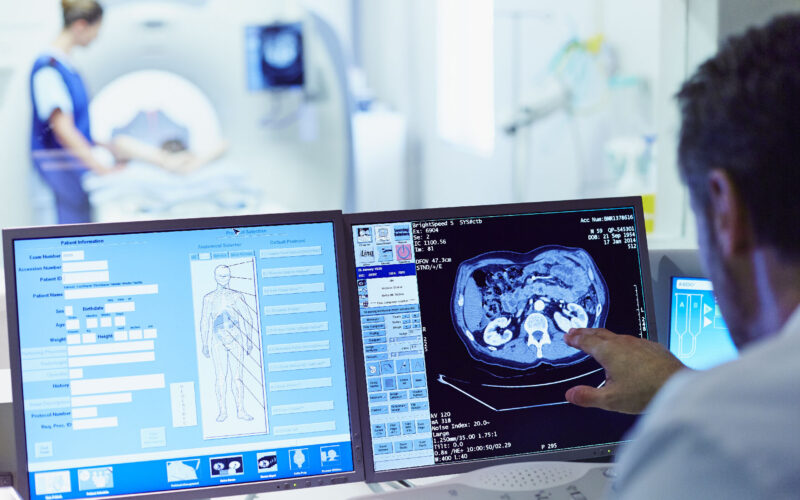Associate Professor
Strategic program(s):
Biography
Areas of expertise
Since the start of his PhD project Dr. Kalkhoven has been interested in signalling through nuclear hormone receptors. His research activities have focussed on the structure and function of several members of this transcription factor superfamily (PR, ER, PPAR) and their associated coactivator proteins (SRC1, CBP/p300).
During his PhD project (Hubrecht laboratory, Utrecht) he investigated the mechanism of growth inhibition of human breast cancer cells by the steroid hormone progesterone and the role of TGF-b in this process. In addition, a study on the mechanism of transcriptional interference between the progesterone receptor and the transcription factor NFk-B was performed. After finishing his PhD he went to the ICRF (London) to work in the laboratory of Dr. M.G. Parker on nuclear receptor coactivators, a class of proteins that interacts with hormone-activated receptors and is required to elicit a transcriptional response. Besides studies on various estrogen receptor mutants, he studied the structure-function relationships between two different isoforms of the coactivator SRC1. He was also involved in the discovery of the LXXLL motif in coactivators, which is required for nuclear receptor binding. After that he went to the LUMC (Leiden) to work on the function of the coactivators CBP and p300 in the laboratory of Dr. A. Zantema and Prof. Dr. A.J. van der Eb, who was succeeded by Prof. C.P Verrijzer in that period. In August 2003 Eric Kalkhoven moved to the UMC Utrecht to start a new research group focusing on the molecular mechanisms behind the differentiation of adipocytes and their endocrine function in health and disease, and was appointed associate professor in 2007.
Dr. Kalkhoven is the chairman and co-founder of the Dutch-Belgian Nuclear Receptor Research Network (NRRN; http://www.nuclearreceptorresearchnetwork.org/), which organizes a yearly one-day international meeting in nuclear receptor research.
In addition, he is the coordinator of the PhD programme ‘Cancer, stem cells and developmental biology’, which offers training and education to approximately 200 PhD students from research groups located in the Hubrecht Institute, the Princess Maxima Center, the UMC Utrecht and Utrecht university (http://www.csnd.nl/home/).
Research programme/group
The aim of our group is to determine the molecular mechanisms behind adipocyte (dys)function in obesity, insulin resistance, lipodystrophy and cancer. We focus on adipocyte differentiation, the endocrine and metabolic functions of these cells and their communication with immune cells, cancer cells and muscle cells. we have for example implicated iNKT cells in metabolism and unravelled a novel USP7-Tip60 pathway in adipogenesis. Together with clinicians and geneticists our laboratory has also identified and characterized rare human mutations in the PPARγ gene and other key genes, as a tool to better understand the function of the encoded proteins in adipogenesis and adipocyte function.
Currently, our research builds on these findings. Our main research questions currently are:
Our research is founded on a deep curiosity into the molecular and cellular mechanisms behind human disease, with the ultimate goal to translate these research findings into improved patient care with our clinical partners. We are embedded in the CMM which focuses on understanding the molecular basis of disease, employing a multidisciplinary approach, including genetics and genomics, metabolomics, bioinformatics, molecular and cell biology, protein chemistry and proteomics.
Group members
Eric Kalkhoven, Group leader
Denise Westland, Technician
Bob van Eijkeren, PhD student
Imogen Morris, PhD student
Miguel Hernandez Quiles, PhD student
Rosalie Baak, PhD student
Former group members
Brenda Hendriks-Stegeman, Technician
Nicole Hamers, Technician
Anouska Borgman, Technician
Olivier van Beekum, PhD student-graduation 10-04-2008
Ellen Jeninga, PhD student-graduation 19-05-2009
Daniel Faber, PhD student-graduation 06-06-2012
Yuan Gao, PhD student-graduation 14-01-2013
Henk Schipper, PhD student-graduation 05-03-2013
Ismayil Tasdelen, PhD student-graduation 25-03-2014
Mariette Kranendonk, PhD student-graduation 19-06-2014
Inkie Evers-van Gogh, PhD student-graduation 28-06-2016
Marjoleine Broekema, PhD student-graduation 03-12-2019
Annemarie Huijbrechts, Post-doc
Arjen Koppen, Post-doc
Maryam Rakhshandehroo, Post-doc
Raquel Saldanha Campello, Post-doc
Key publications
For a complete overview see https://pubmed.ncbi.nlm.nih.gov/?term=kalkhoven+e&sort=date.
Contact details
Telephone number: +31 (0)88 7554258
E-mail address: e.kalkhoven@umcutrecht.nl
Visiting address
Stratenum, room number 3.149
Universiteitsweg 100
3584 CG Utrecht
The Netherlands
Secretariat
Cristina Arpesella
m.c.arpesella@umcutrecht.nl
+31 88 75 68988
See here the link to the research group's website: https://www.umcutrecht.nl/en/group-eric-kalkhoven
Research aim
Understanding the molecular mechanisms behind adipocyte (dys)function in obesity, insulin resistance, lipodystrophy and cancer.
Go to groupAdviseur - Wetenschappelijk advies - Metamorphosis-Tx
Lid editorial board - Editor van wetenschappelijke manuscripten - Scientific Reports
Voorzitter stichting Benelux Nucleaire Receptoren - Organisatie jaarlijkse eendaagse wetenschappelijke meeting - Stichting Benelux Nucleaire Receptoren
